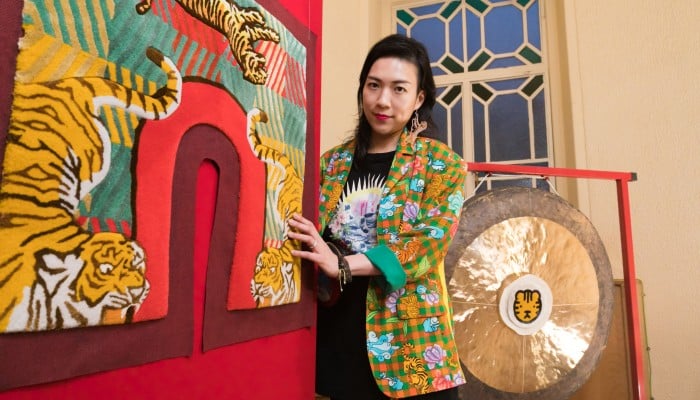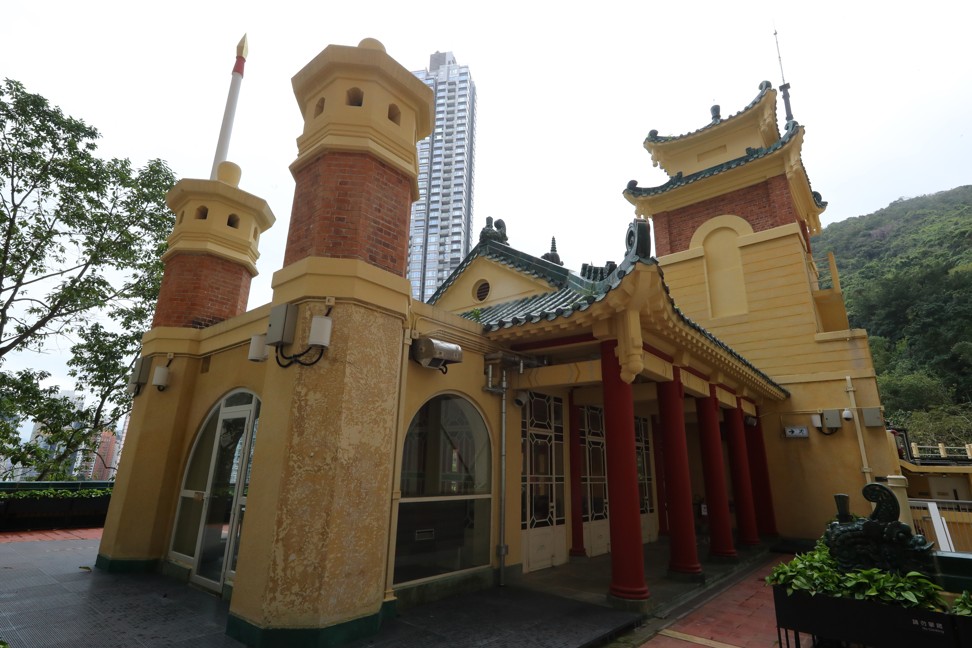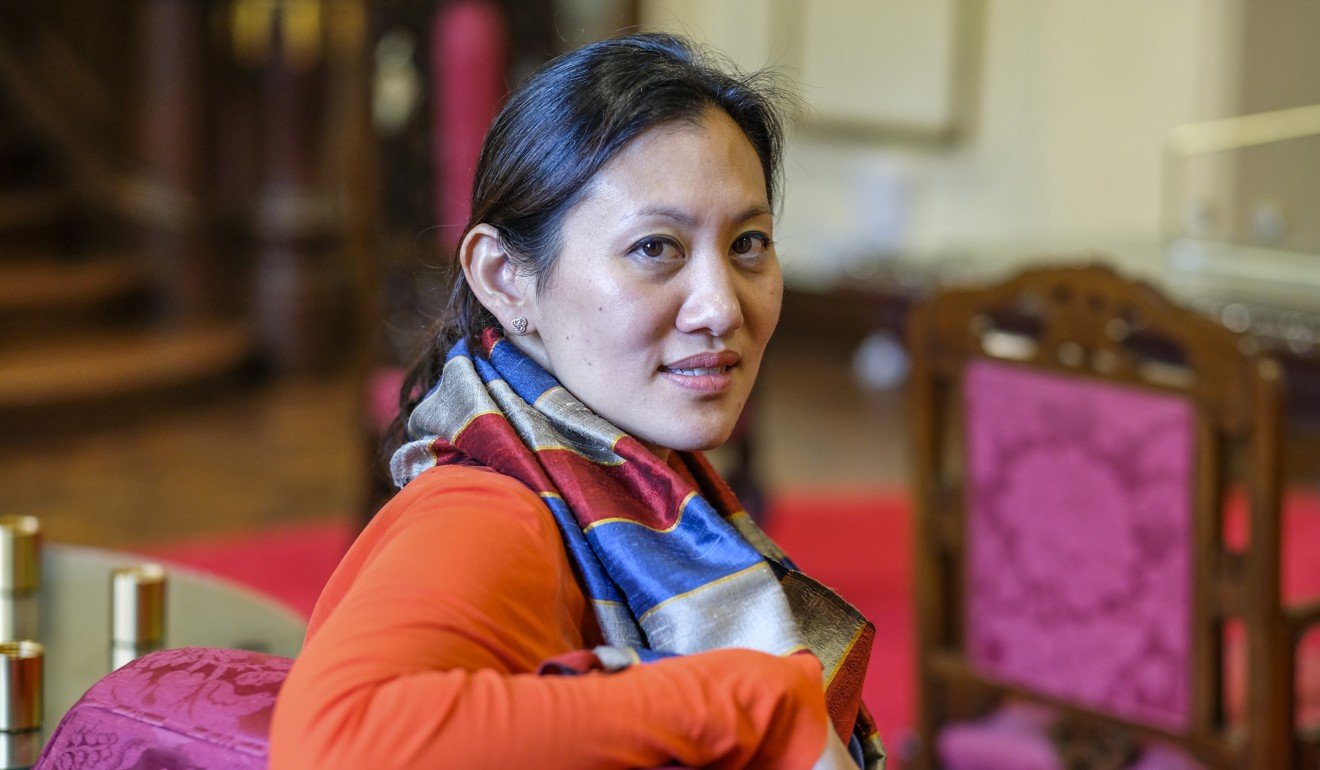
The Aw brothers, Boon Haw (Gentle Tiger) and Boon Par (Gentle Leopard), knew a thing or two about design. When they concocted a herbal ointment in 1920s Burma, they sold it in hexagonal jars with the orange feline that provided its name snarling, memorably, on the front.
Tiger Balm made their fortune; and when Aw Boon Haw built his Hong Kong home, Haw Par Mansion, he created a vast, public and equally unforgettable garden of tortured sculptures.
“The Tiger Balm Gardens were like Disneyland in the 1930s without Mickey Mouse,” says architect Roger Wu.
Those gardens have since disappeared, but after the usual stop-go government debate, the house has been conserved, renovated and turned into a music foundation, for which Wu is executive director of project development. (His business card states Haw Par Music Farm, a reference both to the nurturing of tender talent and the agricultural vale that was once Tai Hang.)

The mansion has also become the city’s latest peg upon which to hang the word “heritage”. In the week before the official opening on April 1, the Hong Kong Institute of Architects held a docent-training workshop there as part of a project called Co-Vitalise Our Heritage.
At the end, Wu gave a tour to show how heritage is done. Two days later, Design Trust Futures Studio (DTFS) used the house to launch its annual themed programme. This year’s concept: “Heritage is Innovation”. Both of DTFS’ earlier programmes, “Small is Meaningful” and “Play is for the People”, focused on the creation of micro-parks in different locations around the city. This one is more obviously site-specific – eight Hong Kong-based designers have been chosen, and funded, by DTFS to create objects that relate to Haw Par itself.

“The company was driven by the design and branding visions of the brothers, and Haw Par is a little bit on the edge,” explains Marisa Yiu, DTFS initiator and co-founder and executive director of Design Trust. “It’s not a huge tycoon project and it opens up a heritage site.”
Otherwise, it’s the same format: a year-long collaborative programme for designers to create something new and “to disrupt, engage, learn and be inspired by a dialogue”. On the night of the launch, the dialogue was literal: Wu gave another of his tours, which included explanations from some of the designers dotted about, with their prototypes, in various corners.
One of them, textile designer Polly Ho of Loom Loop, wore a tiger jacket and an enormous tiger earring in honour of the location. She is creating, with Loom Loop partner Andy Wong, acoustic panels to mark the mansion’s new musical identity.
Also present were the mentors with whom DTFS has paired them – not that the mentees, who have all previously received Design Trust grants, lack experience. Someone like Elaine Ng Yan-ling, for instance, who founded The Fabrick Lab in 2013 and works with both heritage textiles and electronics, is a TED Fellow.
“It’s about non-hierarchical thinking and collaboration, creating something more powerful,” says Yiu.

With the practical help of Tai Ping Carpets, and mentoring advice from architectural designers Neri & Hu in Shanghai, Ng plans to resurrect a phoenix carpet, as glimpsed in old Haw Par photos of the sitting room. The new version, however, will be woven from chromatic yarn and – befitting a magical bird – change shade with footfall.
Most of the projects are still in the early stages; an exhibition is planned for September. When London-based Studio Swine, established in 2011 by Alexander Groves and Azusa Murakami, sat down with its mentees – Ire Tsui, Michael Leung and Rony Chan of DesignLab – on the morning after the launch, it was the first time they’d met.
Some may say this is a very local heritage site, related to Hong Kong people only. But this is about how local can go to global – Studio Swine mentee, Ire Tsui
Leung presented a vase made out of carpet for inspection (Tai Ping is a sponsor). The idea is that its six panels can tell a story; also, that it can be a sound absorber in a room.
“It’s good to come in at this point when you’ve done work without us interfering,” Groves tells the trio, a little later. “You asked how do you make an economic model when you’re a small studio. We can share our experience.”
For Groves, who looks curiously through Tsui’s photos of micro-factories – tiny workshops in Hong Kong’s backstreets – the half-forgotten city is the stimulation: “Marisa’s title is perfect – heritage is innovation, that’s the core of our practice”. DesignLab has also created a die-cut paper mobile evoking tiger patterns; it’s strung together with polyester thread, originally used by old sewing machines to stitch jeans, and sourced in Sham Shui Po.
“Some may say this is a very local heritage site, related to Hong Kong people only,” Tsui states. “But this is about how local can go to global.”

The Haw Par design for which Hong Kong people might feel the strongest association is by Xavier Tsang, the founder of BeCandle in Sai Kung. He wanted to create a scent that conveyed the 10 Courts of Hell – the theme of Aw Boon Haw’s grotesque garden and the stuff of nightmares for several generations of the city’s children.
Like a gentle tiger, the notion of a diabolical fragrance seems a contradiction in terms. Tsang’s mentor, British industrial designer Michael Young, admits he did not understand it at first. Yet it was Young who suggested anodised aluminium, usually found in wall-cladding or aircraft, in which the essential oils could be placed within balls.
“The most difficult part is it oxidises,” says Tsang. “And the first solution decolourised it.”

Eventually, he created a Newton’s Cradle of what looks like 10 Ferrero Rocher chocolates. As the pendulum effect takes hold, a mixture of smells – including “fire”, “rusty metal” and “flowing blood” – combine pleasantly to perfume the sitting-room.
The entire mansion, of course, was built on the proceeds of a strong-smelling substance.
“It’s a good way to communicate that,” says Tsang. For him, heritage is part of the design future. “Now we can carry on and do something better.”







